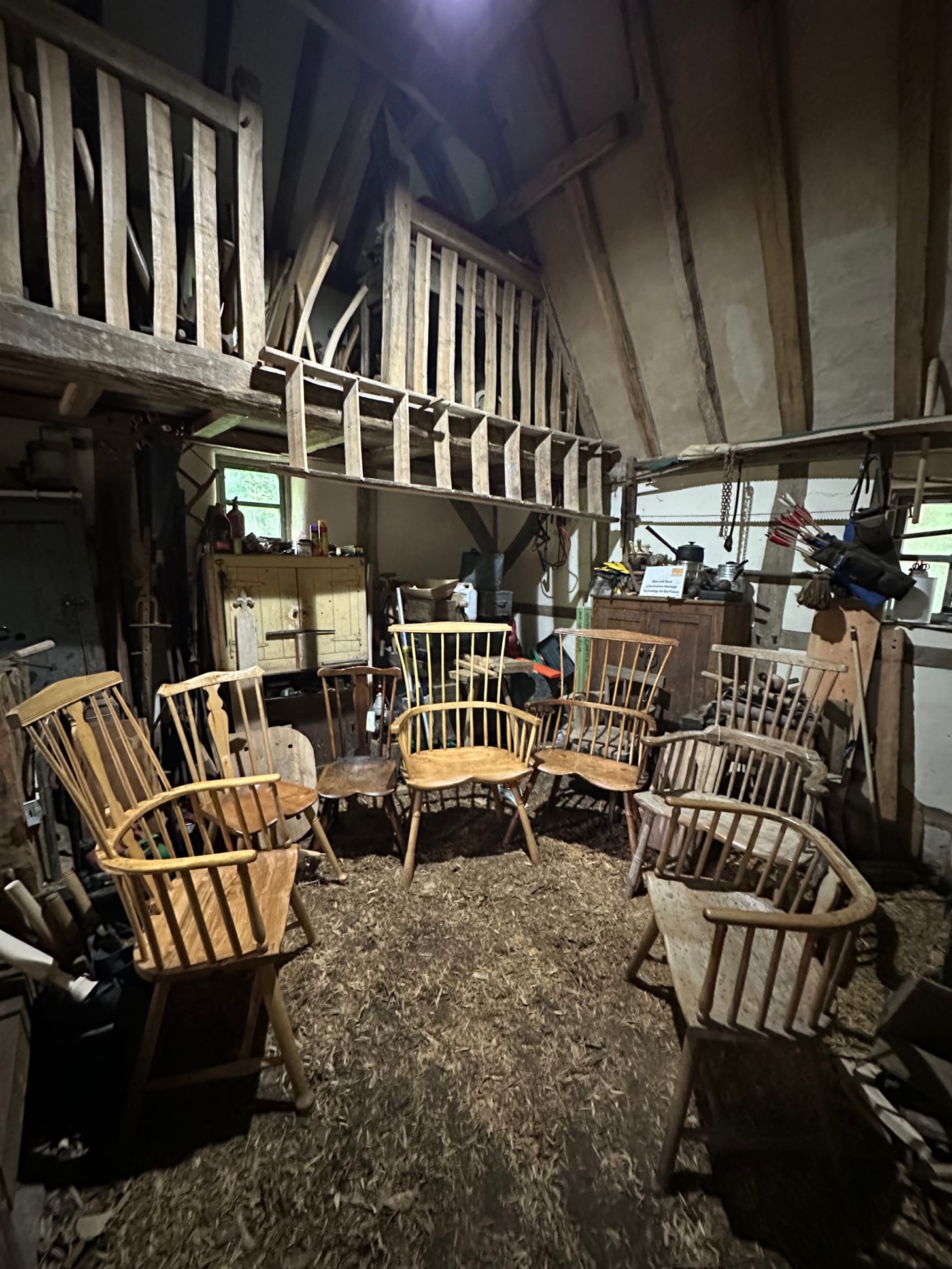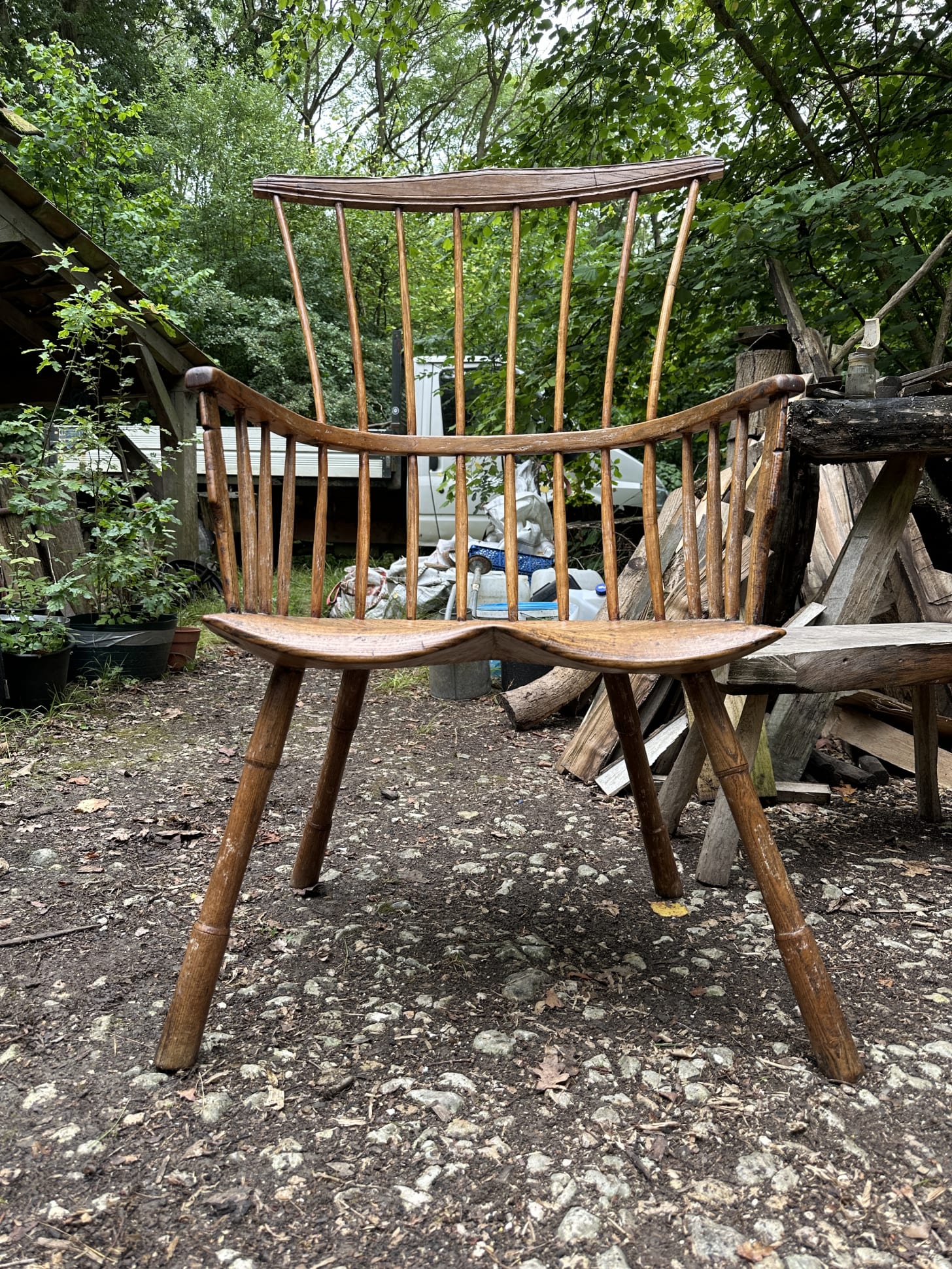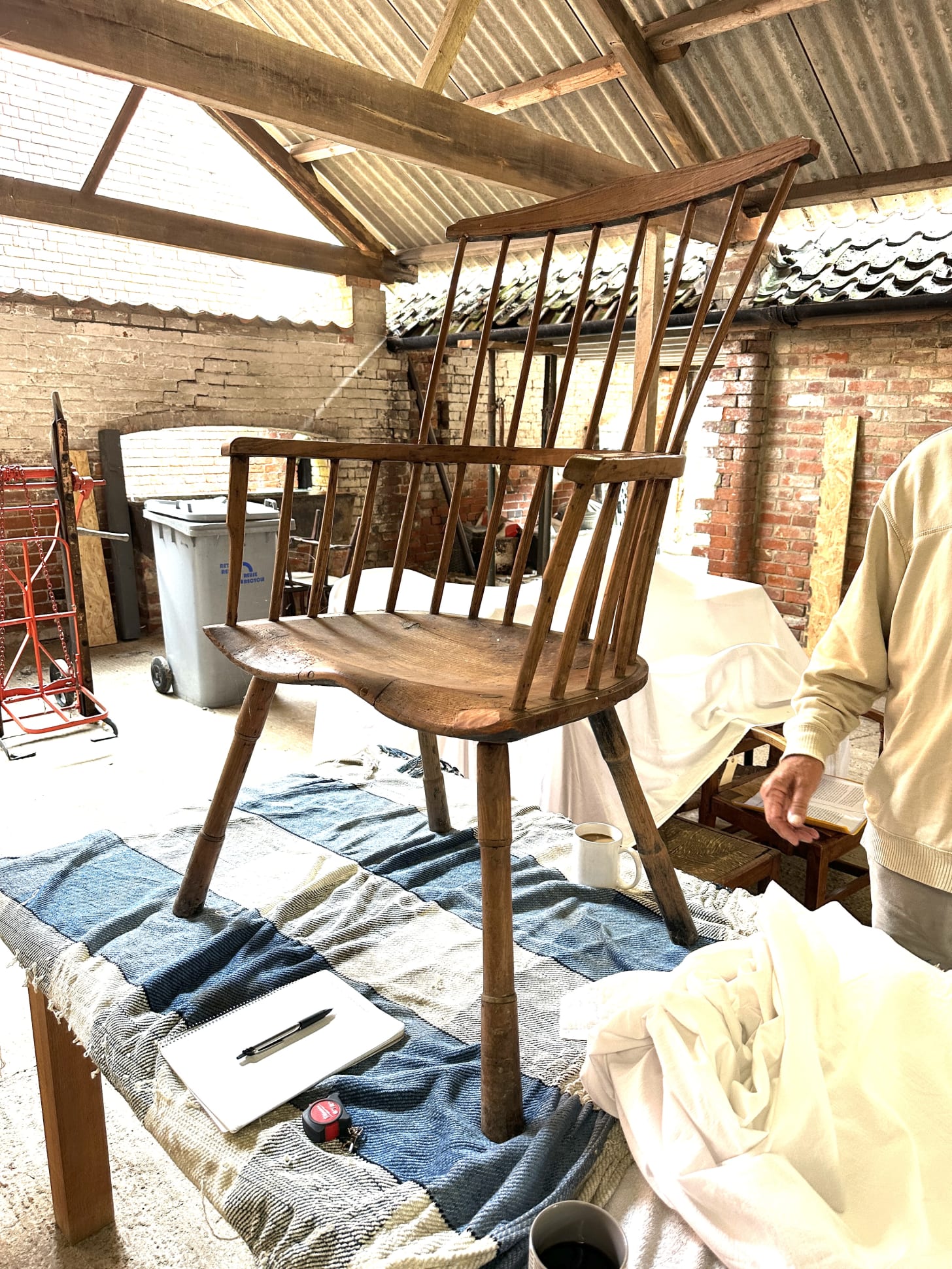This week I visited Lincolnshire to measure three more early Lincolnshire Windsor chairs, talk with the collectors who own them and generally commune with the beautiful landscape in which they were built.
My hope was to also measure (or at least examine) the Lincolnshire Windsor held by the Victoria & Albert museum, but the museum said it was “unable to accommodate” my request.
The good news is that two chair collectors in Lincolnshire, Julian Parker and William Sergeant, went to extreme lengths to arrange two days of viewing, discussion and a lovely homemade lunch.
On Monday, we visited the workshop of Rob Ley, a restoration carpenter and furniture maker who works from a gorgeous building he built in the woods near Alford, Lincolnshire.
In addition to Rob, there were furniture restoration experts and other collectors there to talk about the chairs, compare them to other Lincolnshire Windsors and generally discuss woodwork.
There I measured Julian’s Lincolnshire chair, an excellent example that had been repaired by Tim Garland.
On Tuesday, we visited William Sergeant, a retired farmer who owns hundreds of Lincolnshire chairs and owns two of the chairs I am studying for the next issue of The Stick Chair Journal.
So now I have measured four of these early Lincolnshire chairs (I measured the first one in June), and you know what that means. Yes, I’ve created a spreadsheet. The spreadsheet allows me to compare the details of the chair against other examples. The goal of the spreadsheet is to understand what sort of variations were acceptable to the maker so my reproductions can fall within the “normal” range.
I still have some data to enter, but the spreadsheet is already pointing out some interesting information. Here are a few morsels.
In general, the chairs have their backs tipped at 20° – give or take. This angle is one of the reasons the chair is so comfortable. But it also makes the chair difficult to build because the back of the arm is so narrow – about 1". The good news is that one of the four examples has an arm that is 1-1/8" wide, which makes things easier to drill. So I might use that dimension in a future batch of chairs.
Also, on all four chairs, the arm is higher at the back than it is at the front. This raises the lumbar support about 2" from what I typically use. The back of the arm is about 10-1/2" off the seat, with the front of the arm about 9-5/8" to 10" off the seat.
The chairs’ seats are surprisingly high off the ground. The chair I measured in June was an outlier because its feet had clearly been cut down. The three chairs I measured this week were 17", 18" and 18-1/2" off the ground.
Three of the four chairs had sticks that were light – mostly 1/2" in diameter with a little swelling in the middle. One of the chairs had sticks that were a little (but significantly) heavier – more like 9/16" or 5/8". The heavier sticks aren’t noticeable until you really stare at the chair (like I did).
Finally, all the chairs were made entirely of ash, including the seat. So I’m going to have to dig up some ash for some future chairs. Because of the ravenous emerald ash borer, it’s difficult to find good ash. But it’s still out there.
This journey to Lincolnshire has only cemented my love for this particular form. The three examples I measured this week are all as comfortable, spacious and beautiful as the first chair I encountered in New York in 2019.
Now that I have all the measurements sorted (and some advice on making the moulding on the seat from Rob Ley), the third issue of The Stick Chair Journal is well underway.
Shameless commercial sentences: Paid subscribers to The American Peasant will receive the full-size plans and construction information for this chair shortly. If you have thought about switching to paid, this might be one reason to drop the dime.
.png)






